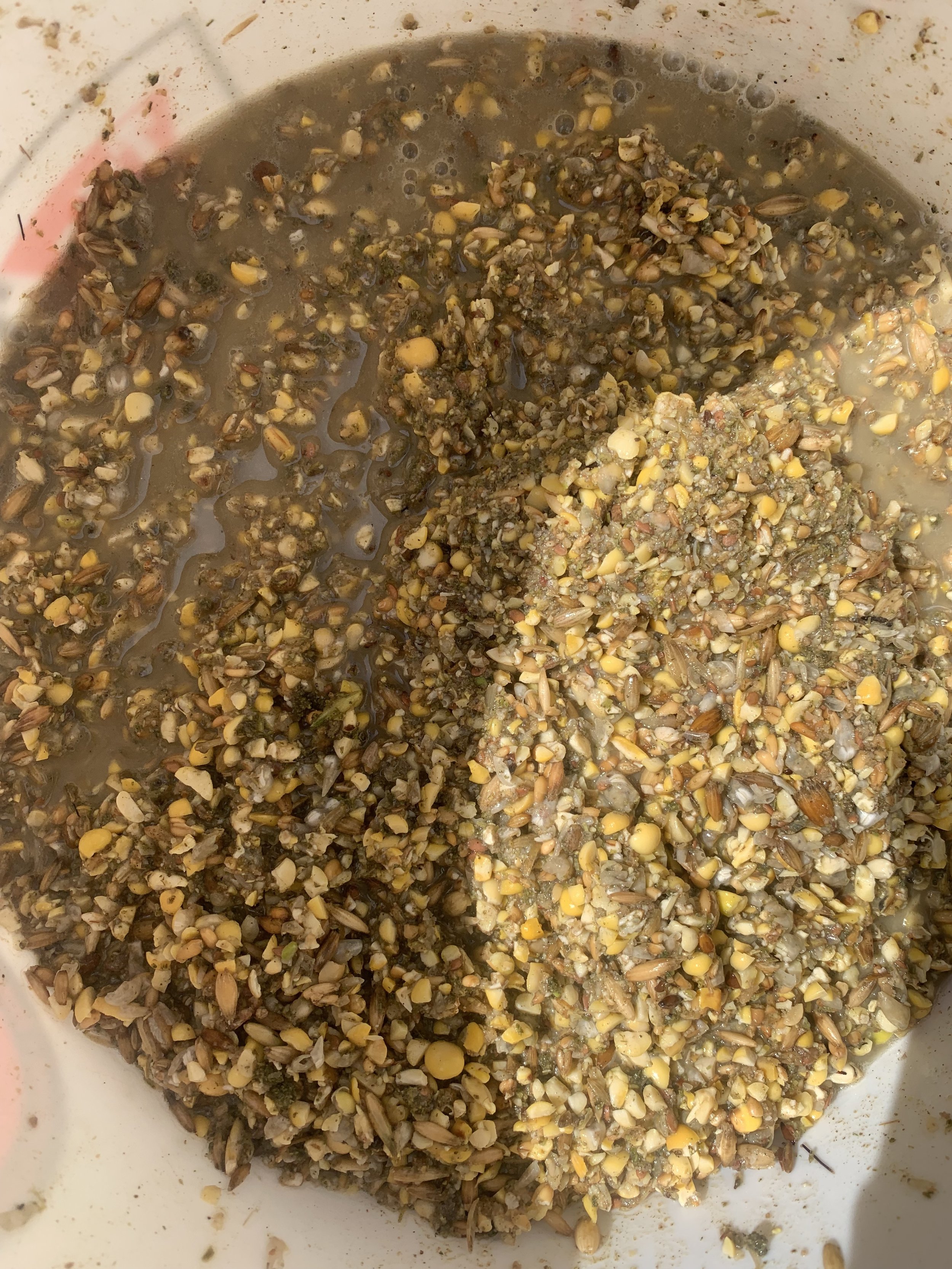Fermented Chicken & Duck Feed
Ducks are greedy slobs.
Over the past few years of breeding, selling and sustainably harvesting birds, there were times during peak seasons that we had no idea how many birds we had and feed costs were through the roof.
If you only have a few birds, fermentation might not make a noticeable difference in your feed budget, but it WILL result in healthier, more resilient birds who digest better and eat less.
Fermented feed has been found to increase egg weight, shell weight and shell thickness; boost the chickens’ intestinal health by forming a natural barrier to acid-sensitive pathogens like E. coli and Salmonella; and lowered their consumption of feed (due to their bodies digesting the fermented feed more effectively), according to a British Poultry Science study.
Once we realized that we could ferment feed, I was amazed that everyone didn’t do it! I admit that we do not usually ferment through the winter, mainly because I would need to store the buckets inside and our dogs are WAY to interested in the smell. But all you really need to get started fermenting your feed is a bucket and water. Apple cider vinegar is technically optional, but it jump-starts the fermentation process, it’s an extra gut-healing boost and they seem to love the flavor.
We actually even ferment our chick starter feed from day 1. Especially with ducklings, we find it makes it much easier for them to swallow and helps to ensure proper hydration. Depending how organized we are, sometimes the food is simply soaked, which is still better than dry in terms of waste. Soaking absorbs all of that powdery but nutritional dust that would typically end up at the bottom of the bag.
“The first day of soaking your grains greatly improves their digestibility by reducing the phytic acid and enzyme inhibitors found in all grains, seeds and legumes. By the second day, lactic acid bacteria begins the process of fermentation by consuming the sugars in the grains and multiplying in great numbers, producing lactic acid. The lactic acid, in turn, makes the environment unsuitable for bad bacteria, leaving behind only beneficial microbes. As long as the grains stay submerged in their lactic acid “bath,” they will be preserved indefinitely (though there comes a point when the grains can become too sour and thus, not very tasty.” - Garden Betty
Soaked feed expands and helps to absorb small dusty particles. Depending on whether or not you add Apple Cider Vinegar, feed will ferment and bubble after about 2 days or so.
I’m sharing our typical routine using a 5 gallon bucket. Ratios can easily be modified for feeding a few chicks or a larger flock. For us, with an average of around 30-40 birds, I’m rotating through three 5 gallon buckets as feed is fermenting.
Here is our simple fermentation ‘recipe:’
Fill a food grade 5 gallon bucket about half up with feed.
Add about 1/4 cup or a generous splash of Apple Cider Vinegar (make sure it’s organic so that it contains ‘the mother’)
Fill the bucket the rest of the way up with de-chlorinated water.* Give it a good stir, or put the lid on and flip to mix.
Cover and let sit at least 48 hours. Fermentation speeds up in warmer weather and slows down in cooler temps, so fermentation can be achieved anywhere from 1 - 4 days depending on the weather and the type of feed you are using.
Check your feed to make sure it’s absorbing the water, but not drying out again. You may need to add more or less water based on how much is absorbed. You want the water to completely cover the feed, even after some is absorbed.
If you’re familiar with any other fermented foods, it’s ready when it’s a bit bubbly and smells tart. The bubbles are the off-gassing of carbon dioxide by lactic acid bacteria. You may also see a bit of film or foam on top, which is all normal and can simply be stirred back in.
Strain or spoon out with a large slotted ladle and enjoy your healthier birds and slightly fatter wallet!
*Chlorine kills both good and bad bacteria. If your water is chlorinated, set it out for 24 hours to allow time for the chlorine to evaporate.
If you’d like to keep your fermented feed going:
Strain out what you’re using each day and add back in the same amount of dry feed, extra water and stir. You can keep reusing the same liquid because it already has good bacteria in it, which speeds up the fermentation of new grains. This will keep the fermentation process going instead of starting a new batch every few days.
When you’re ready to use your feed, I suggest feeding only enough that your birds can finish within an hour or so. The bacteria is most beneficial when it’s served fresh.
If your feed ends up with a strong unpleasant odor, becomes slimy or you see mold before you can use it all up, you will need to discard and adjust your ratios next time. Properly covered and sealed feed should not mold.
Enjoy!
